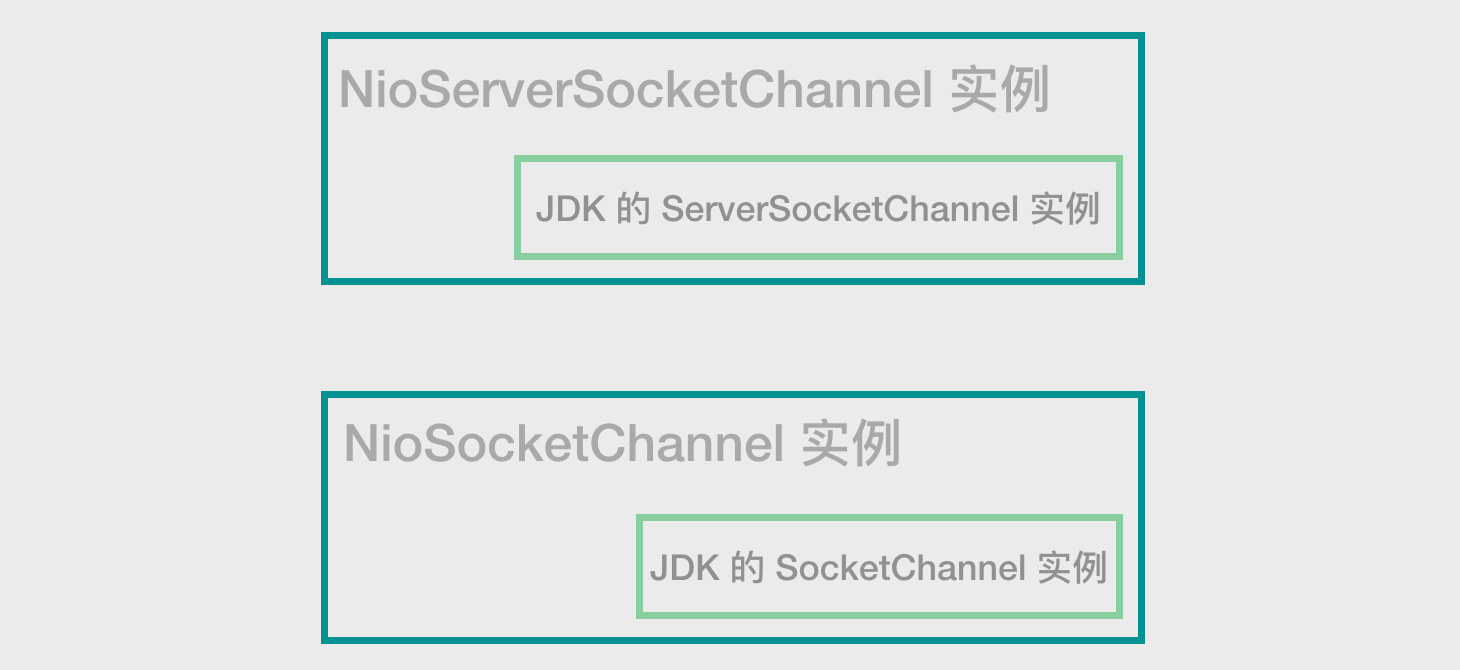Netty源码解析(二)Netty中的Channel
本文最后更新于:April 11, 2022 pm
Netty 源码分析系列:
Netty 源码解析(一): 开始
Netty 源码解析(二): Netty 的 Channel
Netty 源码解析(三): Netty 的 Future 和 Promise
Netty 源码解析(四): Netty 的 ChannelPipeline
Netty 源码解析(五): Netty 的线程池分析
Netty 源码解析(六): Channel 的 register 操作
Netty 源码解析(七): NioEventLoop 工作流程
Netty 源码解析(八): 回到 Channel 的 register 操作
Netty 源码解析(九): connect 过程和 bind 过程分析
目录
Netty 中的 Channel
这节我们来看看 NioSocketChannel 是怎么和 JDK 底层的 SocketChannel 联系在一起的,它们是一对一的关系。NioServerSocketChannel 和 ServerSocketChannel 同理,也是一对一的关系。

在 Bootstrap(客户端) 和 ServerBootstrap(服务端) 的启动过程中都会调用 channel(…) 方法:

下面,我们来看 channel(…) 方法的源码:
1 | |
我们可以看到,这个方法只是设置了 channelFactory 为 ReflectiveChannelFactory 的一个实例,然后我们看下这里的 ReflectiveChannelFactory 到底是什么:

newChannel() 方法是 ChannelFactory 接口中的唯一方法,工厂模式大家都很熟悉。我们可以看到,ReflectiveChannelFactory#newChannel() 方法中使用了反射调用 Channel 的无参构造方法来创建 Channel,我们只要知道,ChannelFactory 的 newChannel() 方法什么时候会被调用就可以了。
- 对于 NioSocketChannel,由于它充当客户端的功能,它的创建时机在
connect(…)的时候; - 对于 NioServerSocketChannel 来说,它充当服务端功能,它的创建时机在绑定端口
bind(…)的时候。
接下来,我们来简单追踪下充当客户端的 Bootstrap 中 NioSocketChannel 的创建过程,看看 NioSocketChannel 是怎么和 JDK 中的 SocketChannel 关联在一起的:
1 | |
然后再往里看,到这个方法:
1 | |
继续:
1 | |
然后,我们看 initAndRegister() 方法:
1 | |
我们找到了 channel = channelFactory.newChannel() 这行代码,根据前面说的,这里会调用相应 Channel 的无参构造方法。
然后我们就可以去看 NioSocketChannel 的构造方法了:
1 | |
我们可以看到,在调用 newSocket(provider) 的时候,会创建 JDK NIO 的一个 SocketChannel 实例:
1 | |
NioServerSocketChannel 同理,也非常简单,从 ServerBootstrap#bind(...) 方法一路点进去就清楚了。
所以我们知道了,NioSocketChannel 在实例化过程中,会先实例化 JDK 底层的 SocketChannel,NioServerSocketChannel 也一样,会先实例化 ServerSocketChannel 实例:

说到这里,我们顺便再继续往里看一下 NioSocketChannel 的构造方法:
1 | |
刚才我们看到这里,newSocket(provider) 创建了底层的 SocketChannel 实例,我们继续往下看构造方法:
1 | |
上面有两行代码,第二行代码很简单,实例化了内部的 NioSocketChannelConfig 实例,它用于保存 channel 的配置信息,这里没有我们现在需要关心的内容,直接跳过。
第一行调用父类构造器,除了设置属性外,还设置了 SocketChannel 的非阻塞模式:
1 | |
NioServerSocketChannel 的构造方法类似,也设置了非阻塞,然后设置服务端关心的 SelectionKey.OP_ACCEPT 事件:
1 | |
这节关于 Channel 的内容我们先介绍这么多,主要就是实例化了 JDK 层的 SocketChannel 或 ServerSocketChannel,然后设置了非阻塞模式,我们后面再继续深入下去。
本文作者: 墨水记忆
本文链接: https://tothefor.com/DragonOne/2179414016.html
版权声明: 本博客所有文章除特别声明外,均采用 CC BY-SA 4.0 协议 ,转载请注明出处!
